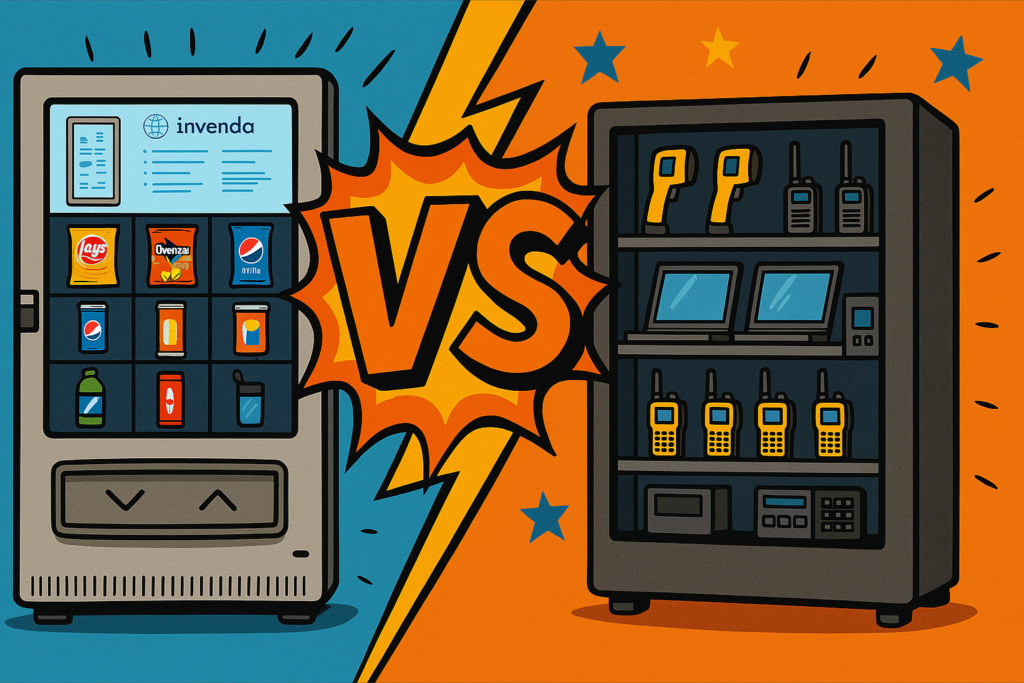
Picture this: You’re in an airport, feeling a little peckish, when you spot a sleek smart vending machine promising everything from snacks to electronics. Meanwhile, just a few steps away, a row of smart lockers silently waits, offering secure storage for travelers’ belongings. In today’s tech-driven world, the lines between convenience and security blur. But have you ever stopped to think about how these two technologies differ? There’s no winner or loser but let’s unravel this mystery together!
What Exactly Are Smart Lockers?
Smart lockers are secure, electronically controlled storage units designed to enhance convenience and security for users. These lockers allow individuals to store and retrieve items easily, making them ideal for various applications, from package deliveries to personal item storage.
Equipped with advanced features such as biometric scanning and IoT integration, smart lockers provide a seamless experience. Users can access their lockers through mobile apps or unique access codes, ensuring a high level of security.
Common use cases span across industries, including retail, logistics, and education. Businesses benefit from improved operational efficiency, while users enjoy the convenience of secure storage.
Smart Vending Machines: Convenience at Your Fingertips
Smart vending machines are automated units that dispense products or services, catering to the fast-paced lifestyles of modern consumers. These machines feature touchscreen interfaces and cashless payment options, making transactions quick and easy.
You can typically find these machines in public areas such as airports, shopping malls, and office buildings, providing 24/7 access to a variety of products. From snacks to electronics, the target products are diverse, and real-time inventory tracking enhances service commitment, ensuring that popular items are always available.
Contrasting Functions: Vending vs. Smart Lockers
When comparing smart lockers and vending machines, the key difference lies in their functions. Vending machines offer immediate access to products, while lockers provide secure storage. The purchasing process in vending machines is straightforward, requiring users to select and pay for items. In contrast, accessing a locker involves entering a code or scanning a barcode.
Each solution excels in different scenarios. Vending machines are perfect for quick snacks, while lockers are ideal for secure package deliveries. Space considerations also play a role; vending machines require more floor space, while lockers can be stacked vertically.
How Users Interact with the Technologies
User engagement with these technologies varies significantly. Vending machines require direct interaction, while smart lockers emphasize touchless interactions, especially during the pandemic. User feedback indicates a high satisfaction level with both technologies, although some technological barriers, like unfamiliarity with the systems, can deter users.
Future advancements in user experience are expected to enhance both technologies, making them even more intuitive and user-friendly.
Wrap-Up: Choosing the Right Solution
In summary, both smart lockers and vending machines offer unique advantages tailored to different needs. Businesses should consider their specific requirements when choosing between these solutions. Future trends indicate that both technologies will continue to evolve, driven by emerging innovations.
Ultimately, staying updated on these advancements is crucial for making informed decisions.
Smart vending machines and smart lockers serve different purposes; the former provides immediate access to products, while the latter focuses on secure storage. Understanding these differences can help you choose the right solution for your needs.
Like it, Share it!
